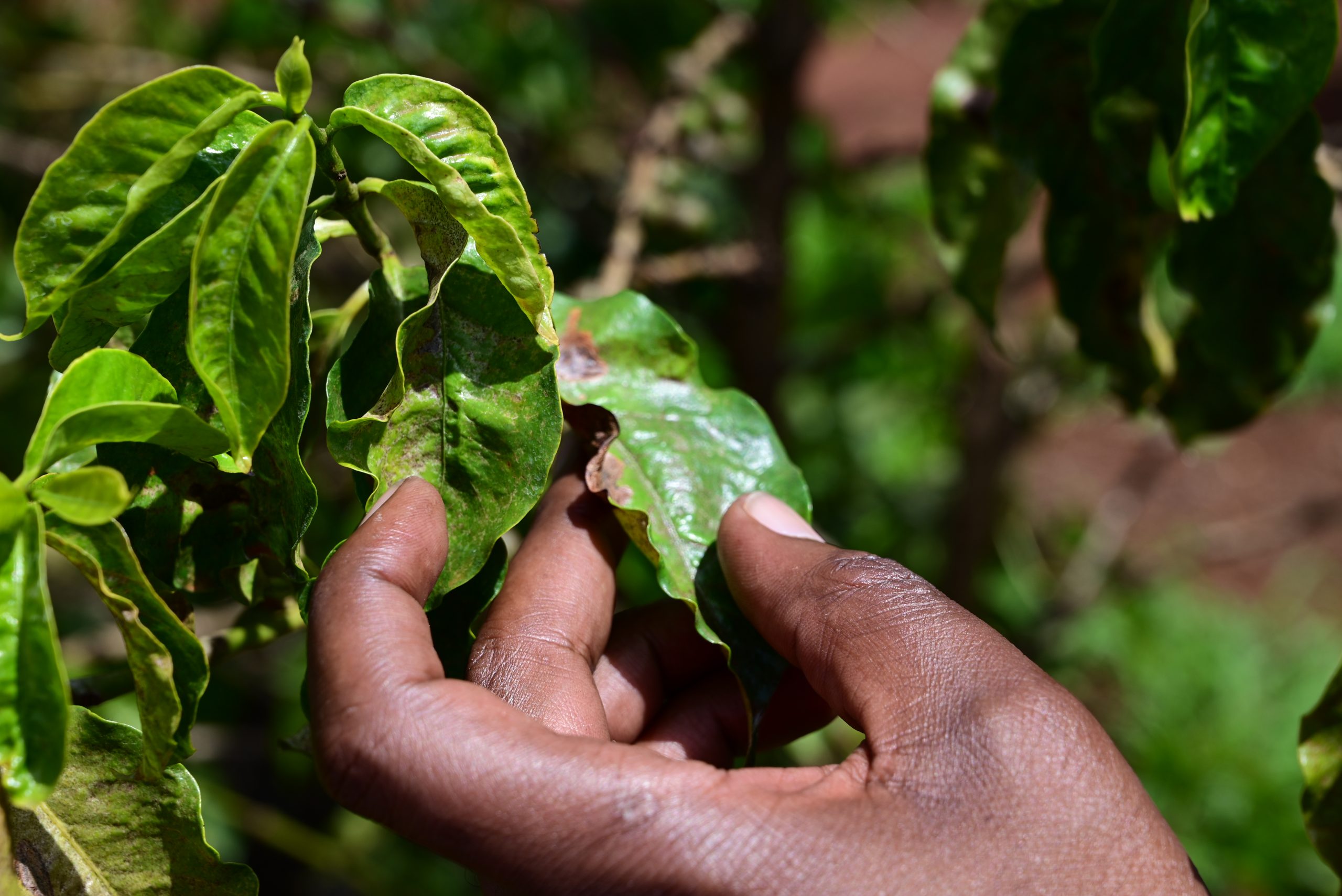By 2050, climate change is projected to reduce the global area suitable for coffee production by half.
As a climate-sensitive perennial crop, coffee is extremely susceptible to the impacts of climate change. Impacts on coffee production include declines in coffee yield, reduced bean quality and loss of suitable land for coffee production.1 Higher temperatures are also directly linked with increases in pest and disease infestations.2
Both Arabica and Robusta coffee have high but differing sensitivities to climatic change. Optimal growing conditions for Arabica require a temperature range of 15-24°C. Temperatures above 24°C causes plant stress and can seriously damage the plant. While Robusta coffee is more tolerant to hot conditions than Arabica with an ideal temperature range between 22°-28°C, it is much more sensitive to lower temperatures than Arabica.3
Both species require a specific annual rainfall pattern with a few months with little rain or even relative drought. Even slight changes in the optimal growing conditions have a direct negative impact on coffee yields and quality.
Research suggests that due to climate change, optimal growing conditions are already changing and will continue to change in the future. Until 2050, climate change will reduce the global area suitable for coffee by more than half.4 At the same time global coffee demand is steadily increasing.
A large part of the burden will be carried by smallholder farmers and their families, whose livelihoods depend on coffee production.

Wild and Hybrid Coffees for a Climate-Resilient Coffee Sector
Did you know that out of over 130 known species of the coffea plant only two (Arabica and Robusta) are commercially used? The low interest in wild coffee species puts them at risk of extinction.5 But wild coffee species are one way to help farmers to cope with those risks. The traits found in these plants are essential for scientists to develop climate-resilient coffee varieties. Some of the wild coffee species, such as Liberica or the recently discovered Stenophylla coffee, can even offer a tasty and drought-resilient alternative to Arabica and Robusta coffee.6
Despite being acutely at risk from climate change and various diseases and pests, coffee is one of the world’s most under-researched crops. Only recently – with climate change looming – has the interest and investment into wild coffee species and hybrid varieties increased.
Coffee farmers are already facing extreme pressure from drought, disease, and fluctuating commodities prices. Addressing those risks requires tapping into the genetic riches of wild coffee. By consciously investing into the commercial use of climate-resilient coffee, you can play a key part in creating a fairer, more diverse coffee sector that can cope with the increasing impacts of climate change.
References
- Bunn, C., Läderach, P., Ovalle Rivera, O., & Kirschke, D. (2015). A bitter cup: Climate change profile of global production of Arabica and Robusta coffee. Climatic Change, 129(1–2), 89–101. https://doi.org/10.1007/s10584-014-1306-x
Pham, Y., Reardon-Smith, K., Mushtaq, S., & Cockfield, G. (2019). The impact of climate change and variability on coffee production: A systematic review. Climatic Change, 156(4), 609–630. https://doi.org/10.1007/s10584-019-02538-y ↩︎ - Jaramillo, J., Muchugu, E., Vega, F. E., Davis, A., Borgemeister, C., & Chabi-Olaye, A. (2011). Some Like It Hot: The Influence and Implications of Climate Change on Coffee Berry Borer (Hypothenemus hampei) and Coffee Production in East Africa. PLoS ONE, 6(9), e24528. https://doi.org/10.1371/journal.pone.0024528 ↩︎
- Magrach, A., & Ghazoul, J. (2015). Climate and Pest-Driven Geographic Shifts in Global Coffee Production: Implications for Forest Cover, Biodiversity and Carbon Storage. PLOS ONE, 10(7), e0133071. https://doi.org/10.1371/journal.pone.0133071
Zullo, J., Pinto, H. S., Assad, E. D., & De Ávila, A. M. H. (2011). Potential for growing Arabica coffee in the extreme south of Brazil in a warmer world. Climatic Change, 109(3–4), 535–548. https://doi.org/10.1007/s10584-011-0058-0 ↩︎ - Bunn, C., Läderach, P., Ovalle Rivera, O., & Kirschke, D. (2015). A bitter cup: Climate change profile of global production of Arabica and Robusta coffee. Climatic Change, 129(1–2), 89–101. https://doi.org/10.1007/s10584-014-1306-x
Grüter, R., Trachsel, T., Laube, P., & Jaisli, I. (2022). Expected global suitability of coffee, cashew and avocado due to climate change. PLOS ONE, 17(1), e0261976. https://doi.org/10.1371/journal.pone.0261976 ↩︎ - Davis, A. P., Chadburn, H., Moat, J., O’Sullivan, R., Hargreaves, S., & Nic Lughadha, E. (2019). High extinction risk for wild coffee species and implications for coffee sector sustainability. Science Advances, 5(1), eaav3473. https://doi.org/10.1126/sciadv.aav3473 ↩︎
- Davis, A. P., Kiwuka, C., Faruk, A., Walubiri, M. J., & Kalema, J. (2022). The re-emergence of Liberica coffee as a major crop plant. Nature Plants, 8(12), 1322–1328. https://doi.org/10.1038/s41477-022-01309-5 ↩︎

